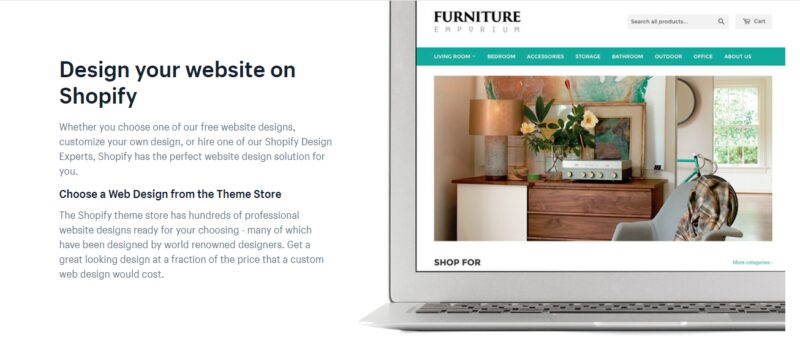Do You Have a Brand?
A brand is a term or image by which your customers know your products or services. The brand is the face of your company. Now, there are many brands out there like yours. So you want to make your brand stand out from the others to attract and retain the attention of present and potential customers. You start by choosing a brand name and designing a logo that represents the ethos of your company and relates to your target audience. Then you start building your brand by offering quality products and services, which result in customer satisfaction. Now you have established your brand and given it an image. This is your brand identity.
If you think creating a brand identity for your business is hard work, you’ve just begun. Now you have to keep up the momentum. Your brand’s personality should be reflected wherever your customers interact with it. This includes letterheads, visiting cards, advertisements, and showroom facades. Customer-friendly showrooms feature attractive visual merchandising and polite staff. An eCommerce website is the digital version of a brick-and-mortar showroom. Whether you’re building a brand or sustaining its image, its personality should be optimized on your eCommerce portal. You do this by carefully selecting your web design.

Designing An E-Store
In a physical store, customers can look, touch, feel, and ask. A digital store has to replicate that convenience as nearly as it can. It takes an intuitive website layout to give your customers all the information they require about your products. It must contain a lot of images, graphics, which match the description of the products. Yet all of this information has to be arranged in an appealing manner. This means choosing your site layout and color schemes with utmost caution. There are certain must-haves in an e-store web design. Readymade template designers like Shopify have many different options and can help you with their expertise and experience.
eCommerce website designs contain well-structured and secure back-end processes by necessity. The server needs to be fool-proof and must be programmed to handle all the complex needs of an e-commerce website. Databases must be optimized to manage thousands of product SKUs, all of which require multiple data fields like price, accessories, shipping, etc. The most important components of an e-store back-end are air-tight payment gateways. Customers tacitly trust that their banking information is safe in your servers. Betraying that trust can be fatal for your eCommerce website. And for your brand.
Power of Imagery
Your eCommerce website’s imagery is the major contributor to your brand identity. Imagery includes photos, fonts, color schemes, and your logo. Avoid stock images; they look fake and clichéd. But more importantly, they fail to convey the personal message that your own photographs can deliver. Stock photos undermine your brand’s identity. Creating your own images allow you to use colors that match the scheme of your website.
Your Logo
Let your logo be omnipresent on the website since it’s the face of your brand. The more frequently customers see your logo, the more it gets embedded in their minds. However, don’t let the logo get in the way of satisfying user experiences or it will reflect negatively on your brand identity. We all know about the power of suggestion. But in the world of eCommerce, Call-To-Action stands a better chance of converting users into customers. Your web design must incorporate Calls-To-Action buttons in various strategic locations, where they don’t interfere with user-experience 
Dare to be Different
A sure-fire way to dilute your brand identity is by copying other brands. A lot of customers approach web design companies by pointing at the website of a competitor and asking for something similar. A brand’s identity has to be unique in order to stand out. If you’re impressed with a competitor’s web design and want to copy it, you’re subordinating your brand identity to that of your rival. Customers that shop at your competitor’s website will notice the similarities and judge the value of your brand accordingly.
Never underestimate the ability of a website to positively interact with users until they become customers. Your brand identity is the sum of your company’s values and vision. These should resonate with your customers to make them loyal followers of your brand and keep them coming back to your website. Your brand achieves a lasting brand identity when customers automatically keep returning. It’s worth investing time, creativity and effort in creating an eCommerce website to reflect a strong brand personality. After all, that is what translates to more sales and ultimately, more revenue.
If web designing is something holding you back when it comes to enhancing your store, many eCommerce platforms, such as Shopify, offer free templates and themes for your website. They’re easy to use and customizable to suit your business and style.



